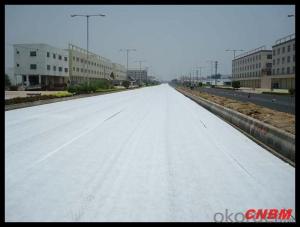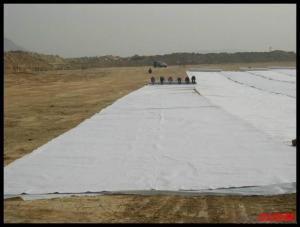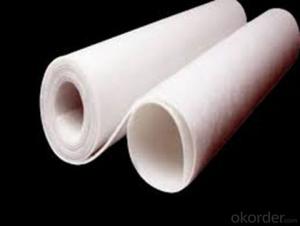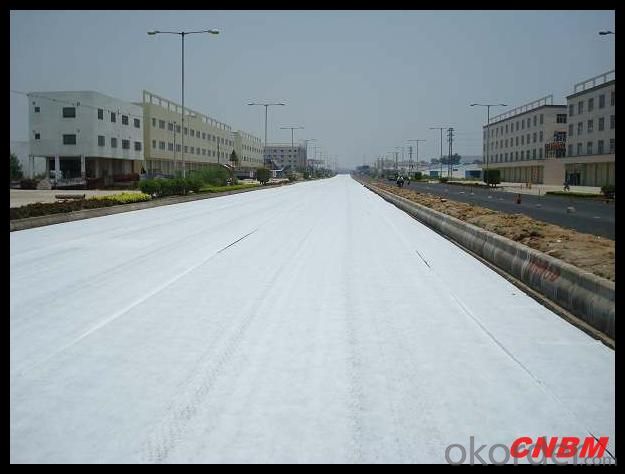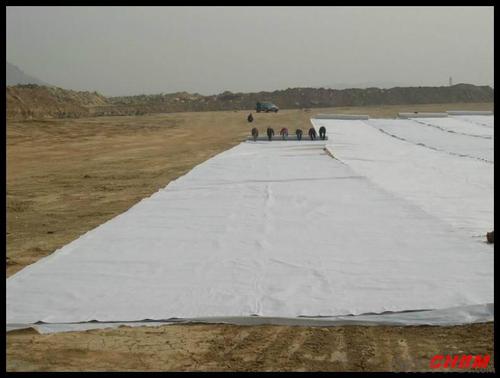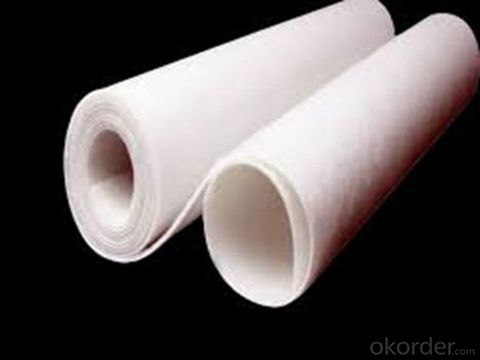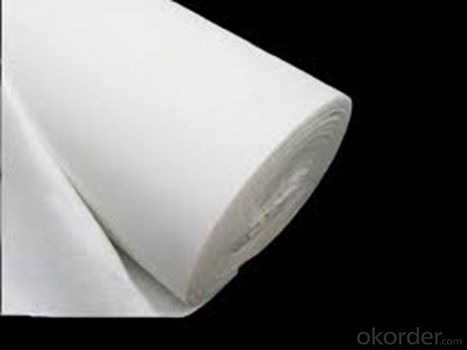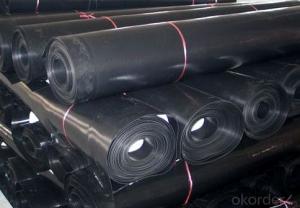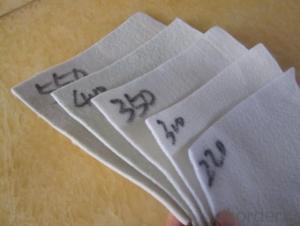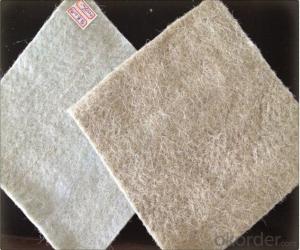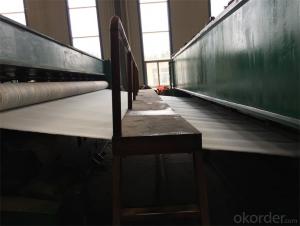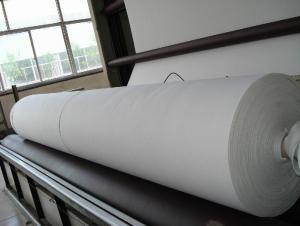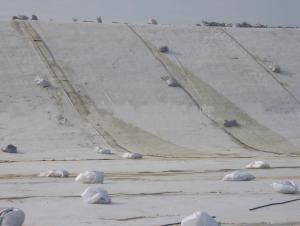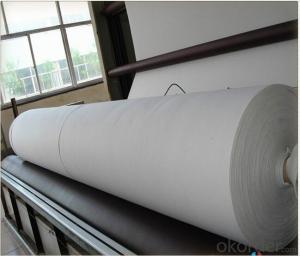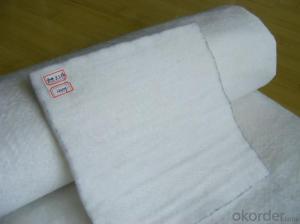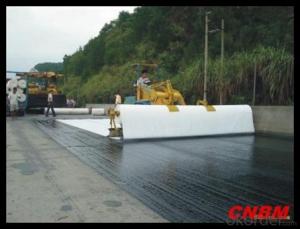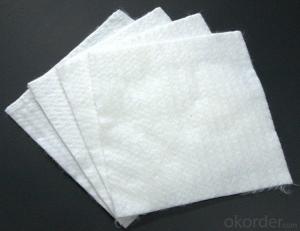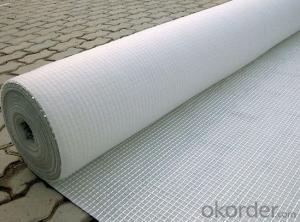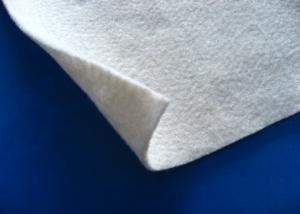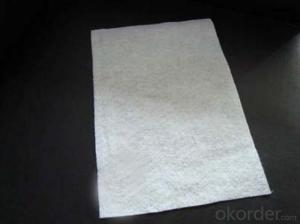200g Short Fiber Non-Woven Geotextile for Construction
- Loading Port:
- China main port
- Payment Terms:
- TT OR LC
- Min Order Qty:
- 4000 m²
- Supply Capability:
- 1000000 m²/month
OKorder Service Pledge
OKorder Financial Service
You Might Also Like
Specification
Desciriptions:
Jute Geotextile Woven Geotextile 200g m2 are the preferred products for lining projects requiring low permeability , corrosion protection , exceptional chemical and ultraviolet resistance properties , which makes them extremely cost effective for many applications such as waste landfill , storage reservoirs ,canals , powr plants in energy , vapor barriersand waste water treatment in the line of industry and aquaculture and agriculture projects.
Specifications:
| Weight / Mass | 100gsm - 800gsm |
| width | Within 8 m |
| longth | 50-100m/roll (at request) |
| Material | PP / PET |
| Color | Black , white , grey |
| Certification | CE/ISO9001 |
| Manufacturing method | nonwoven / woven |
ill or other buildings.
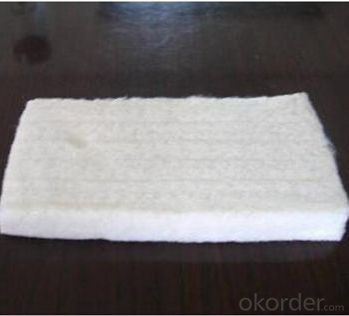
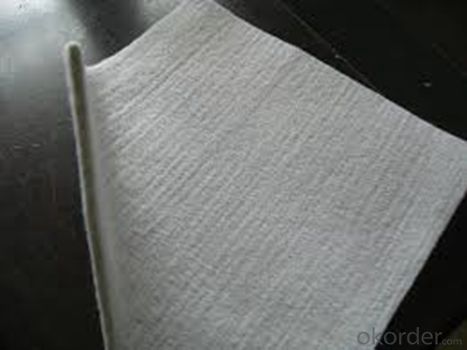
Packaging & Shipping
Packing: PLASTIC FILM INSIDE, AND WOVEN BAG OUTSIDE
Shipping: About 15 days after receipt the deposit
pecifications
geotextile fabric
permeability,filtration,easy for construction
ISO and CE certificate
Good quality and competitive price
Our Service
Quality assurance
1.On a regular basis or as per your request,we entrust national testing agencies to conduct quality inspections
2. Strictly in accordance with the ISO9001-2008 international quality system standard,we monitor and manage the whole process throughout production,quality testing,and measurement to ensure product quality
3. For quality-related construction delay or substandard construction(except for damage or losses due to customer’s responsibility or irresistible natural disasters),we have refunding,replacement,and repair services.We will respond to customers’ feedbacks on quality issues within 24 hours.
After-sales service
1.In order to provide customers with comprehensive technical support,we will provide technical and other related information upon request in a timely manner.
2.In required,we will appoint specialized technicians to the construction site to give technical trainings to construction people,and offer technical guidance throughout the whole construction process.
3.For damage due to shipment and delivery,after we receive the complaint,we will check the issure through provided pictures and videos.If our responsibility is confirmed,we wil offer free replacement.
4.When the construction is completed,as your request,our technical staff may participate in the final acceptance.
FAQ:
Q: What kind of payments does jenor support?
A: T/T, L/C, Cash are accepted.
Q: Do you charge for the samples?
A: Accordeing to our company policy, the samples are free, we only charge the freight fee. And we will return the freight fee during the next order.
Q: Can you produce according to customers' design?
A: Sure, we are professional manufacturer, OEM and ODM are both welcome.
Q: Do you have other products?
A: Yes, please check the pictures:
- Q: How do geotextiles affect construction site safety?
- Geotextiles play a crucial role in enhancing construction site safety by acting as a barrier against soil erosion, stabilizing slopes, and improving overall ground stability. These textiles prevent sediment runoff, control water flow, and reinforce soil structures, reducing the risk of accidents and potential damage to the construction site. Additionally, geotextiles aid in the filtration and drainage system, preventing waterlogging and enhancing the stability of foundations, ultimately ensuring a safer working environment for construction workers.
- Q: Can geotextiles be used for reinforcement in embankment construction?
- Yes, geotextiles can be used for reinforcement in embankment construction. Geotextiles are commonly used to improve the stability, strength, and durability of embankments by distributing loads, preventing soil erosion, and promoting drainage. They are effective in reinforcing the soil and preventing potential failures in embankment structures.
- Q: What are the key considerations for geotextile installation in areas with high seismic activity?
- Some key considerations for geotextile installation in areas with high seismic activity include selecting geotextiles that have high tensile strength and flexibility to withstand ground movement during earthquakes. It is also important to properly anchor the geotextiles to prevent movement or displacement. Additionally, the design and installation of the geotextiles should take into account the potential for liquefaction and soil settlement during seismic events to ensure their effectiveness in stabilizing the ground and preventing erosion. Regular inspections and maintenance should be conducted to identify any damage or displacement caused by seismic activity and address them promptly.
- Q: How are geotextiles incorporated into engineering designs?
- Geotextiles are commonly incorporated into engineering designs as they provide a range of benefits such as soil stabilization, erosion control, drainage improvement, and reinforcement. They can be used in various applications such as road construction, retaining walls, embankments, landfills, and coastal protection. Geotextiles are often placed between soil layers to separate and reinforce them, enhancing the overall stability and durability of the project.
- Q: Can plant roots penetrate geotextiles? Which kind of similar material can keep soil and water and let the plant roots pass through it?
- Of course. The roots of plants are omnipotent, and it has a strong vitality. It is small, but its power is infinite. It is also because it is small, it makes it seamless no omnipotent. It can wear the river across the sea, it can wear stone to break the ground, it is powerful you can not imagine, you do not see the cliffs on the grass, the king did not see the plow of the fern leaves!
- Q: Principle and Advantages of Permeable Geotextile
- The advantages of permeable geotextile: 1: isolation, the use of polyester staple acupuncture geotextile with different physical properties (particle size, distribution, consistency and density, etc.) of building materials (such as soil and sand, soil and concrete Etc.) to isolate. So that two or more materials are not lost, not mixed, to maintain the overall structure and function of the material, so that the building capacity to enhance the capacity. 2: filter, when the water from the fine soil into the coarse soil layer, the use of polyester staple acupuncture geotextile good permeability and water permeability, so that water through, and effectively carrying soil particles, sand, small Stone, etc., in order to maintain the stability of soil and water engineering. 3: drainage, polyester staple acupuncture geotextile has a good water conductivity, it can form a drainage channel within the soil, the soil structure of the excess liquid and gas efflux. 4: reinforced, the use of polyester staple acupuncture geotextile to enhance the soil tensile strength and resistance to deformation, enhance the stability of the building structure to improve the quality of soil. 5: protection, water erosion of the soil, the effective concentration of concentrated diffusion, transmission or decomposition, to prevent soil damage by external forces, the protection of the soil. 6: high tensile strength, good permeability, breathable properties, high temperature, anti-freeze, anti-aging, corrosion-resistant, not moth-eaten.
- Q: Can geotextiles be used in geocomposite applications?
- Yes, geotextiles can indeed be used in geocomposite applications. Geotextiles are often combined with other materials, such as geomembranes or geogrids, to create geocomposites that offer enhanced performance in various geotechnical and environmental applications. Geocomposites provide improved filtration, drainage, separation, and reinforcement properties, making them suitable for a wide range of civil engineering projects, including road construction, erosion control, landfill engineering, and drainage systems.
- Q: What are the specifications for geotextiles in green roof applications?
- Geotextiles used in green roof applications typically have specific specifications such as high tensile strength to withstand the weight of the vegetation and soil, excellent water permeability to allow efficient drainage, UV resistance to withstand prolonged exposure to sunlight, and appropriate thickness to provide adequate protection for the underlying layers of the green roof system.
- Q: How do geotextiles help with soil reinforcement in retaining wall applications?
- Geotextiles help with soil reinforcement in retaining wall applications by providing additional stability and strength to the soil. They act as a barrier, preventing soil erosion and movement, while also allowing water to drain through. This helps to distribute the weight of the soil more evenly and reduces the pressure on the retaining wall. Additionally, geotextiles can improve the overall lifespan and performance of the retaining wall by reducing the impact of external forces such as wind and water.
- Q: 300 grams of non-woven geotextile piercing strength is how much
- First of all, according to what you said 300g non-woven geotextile should be polyester staple fiber non-woven geotextile. Polyester staple fiber non - woven geotextile implementation of the national standard GB / T - 2008 standard. According to GB / T-2008 standard anti-puncture strength (standard is CBR burst strength) requirements, 300g national standard geotextile anti-piercing strength should be ≥ 1.5KN.
Send your message to us
200g Short Fiber Non-Woven Geotextile for Construction
- Loading Port:
- China main port
- Payment Terms:
- TT OR LC
- Min Order Qty:
- 4000 m²
- Supply Capability:
- 1000000 m²/month
OKorder Service Pledge
OKorder Financial Service
Similar products
Hot products
Hot Searches
Related keywords
